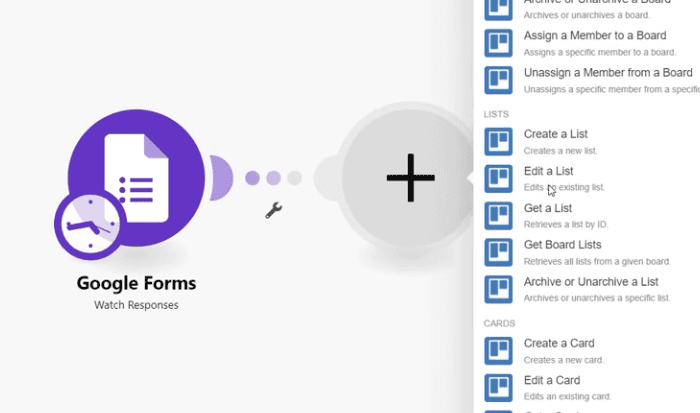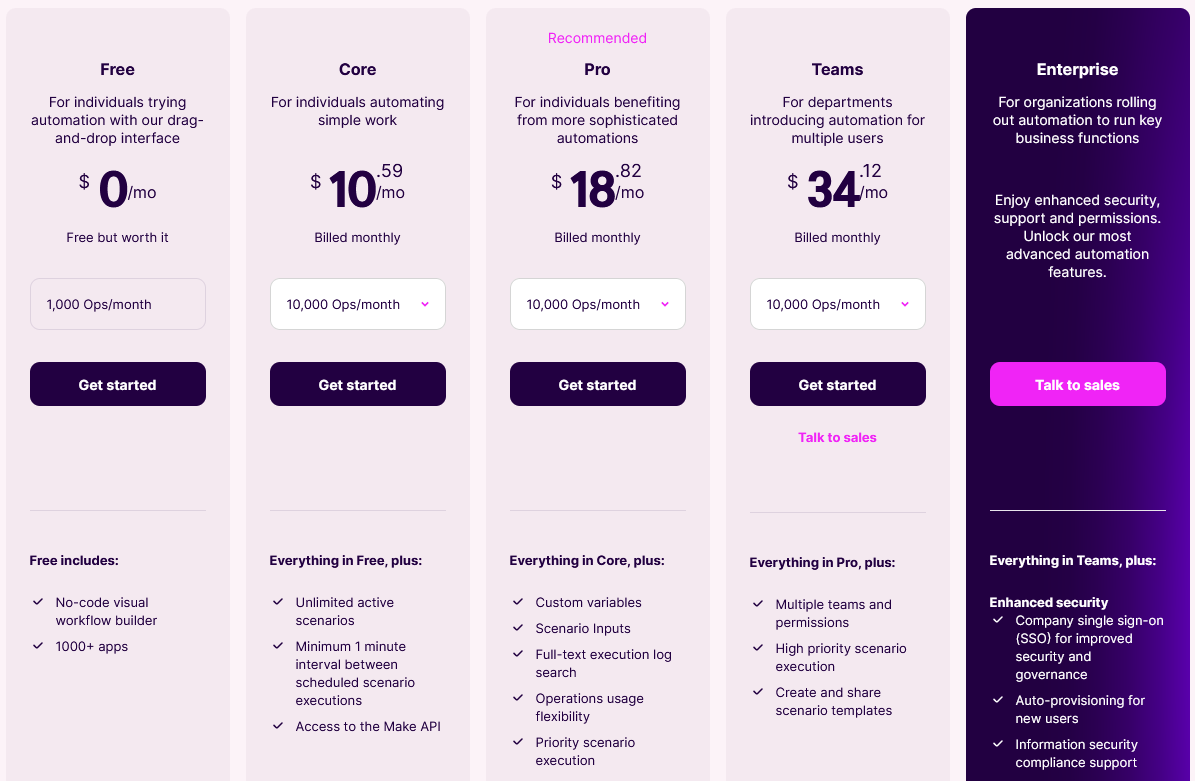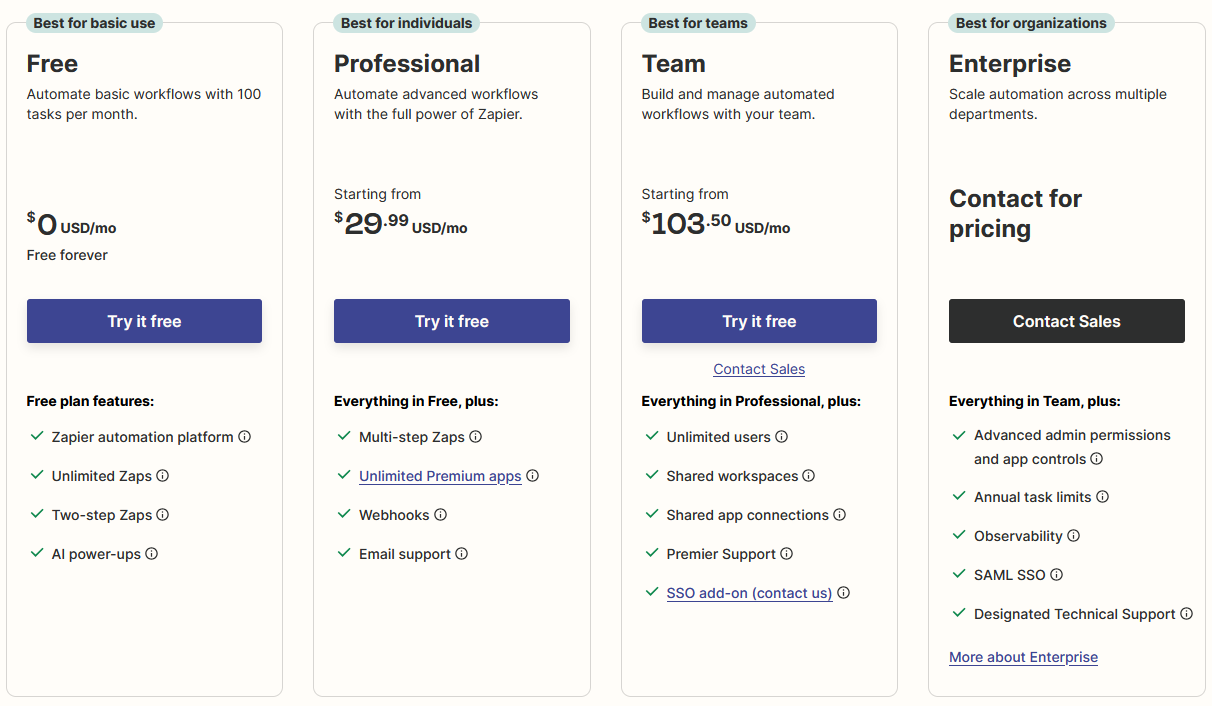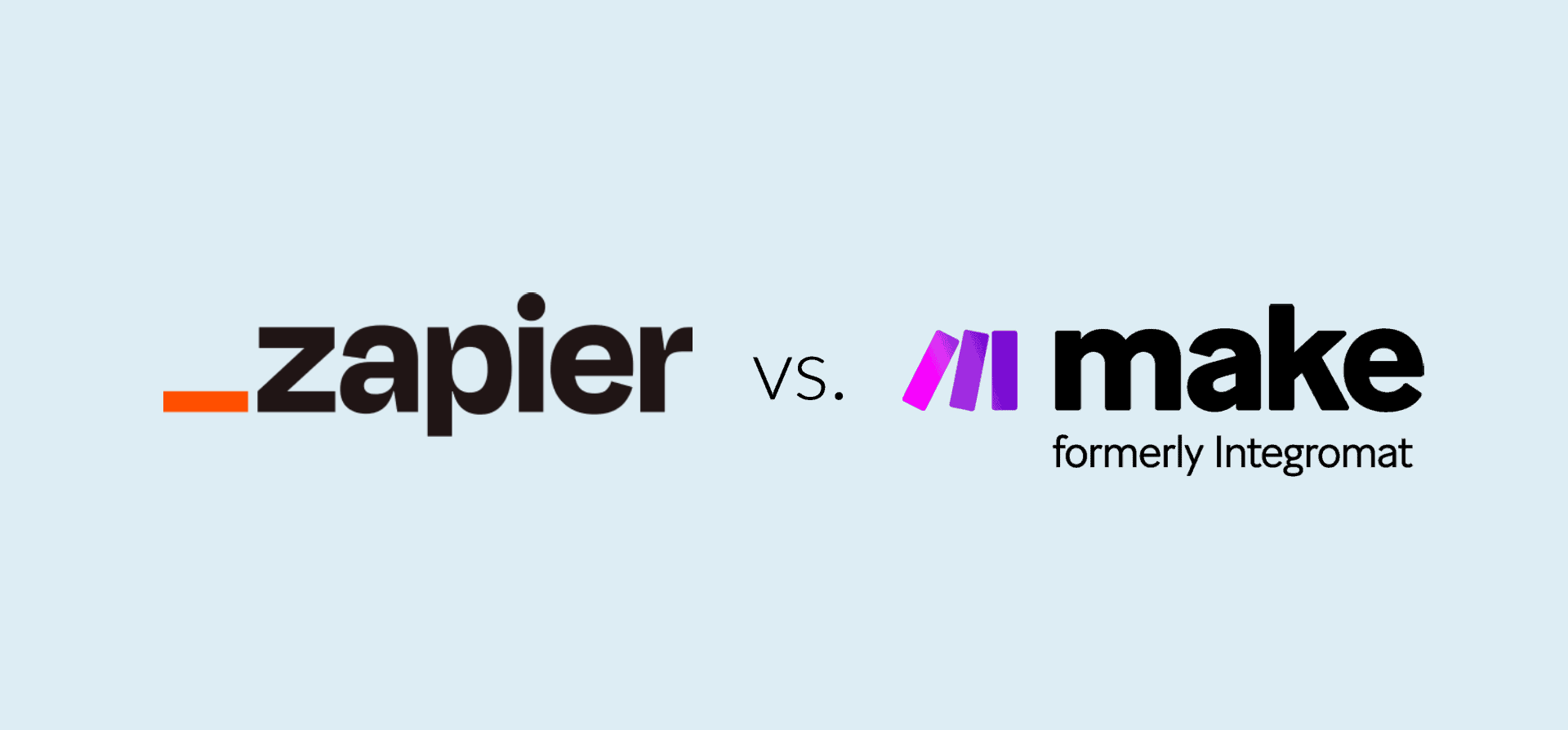Make vs. Zapier: How Should You Automate Your Workflow?
You know your tool stack needs an integration solution. You’ve heard the grumbling from people forced to copy and paste data endlessly or switch back and forth between tools. But with so many options on the market, it’s tough to find the right one for your workflow — especially when they can take months to roll out. In the integration space, many compare Make vs. Zapier and wonder which one would work best for their tool stack.
In this breakdown, we’ll cover each automation tool, highlighting features, pricing, and how many integrations are available.
What is Make?
Make — the automation tool formerly known as Integromat — is a visual platform that lets you create automations that save time and eliminate manual work across tools. It supports one-to-one automations as well as complex processes that span your entire tool stack.
The drag-and-drop interface means anyone can build automations that make their daily work easier, without any coding knowledge. Make integrates all kinds of apps, from CRM software to email clients and project management tools.
What is Zapier?
Zapier uses “if this, then that” logic to automate actions throughout your workflow. You can build multi-step automations — called Zaps — to automate tasks across an entire workflow with a single trigger. Zapier’s integrations focus on apps and tools used by professionals and organizations.
The platform can support a variety of organizations and their departments. Everyone from marketing teams to software development and Enterprise-sized clients to small startups can benefit from a Zapier automation.
Make vs. Zapier: features and integrations
When comparing make and Zapier, you need to focus on the details. Since they’re both automation tools, some of the most important differences between them are in how building those automations feels.
The user interface
Both Zapier and Make use “if-this-then-that” logic to power their automations. That means every workflow starts with a “thing” that starts it. That might be receiving a submission from a Google Form, the creation of a new task in Asana, and so on. This is your trigger. From there, you can set up a number of actions that will result from that trigger in another too.
In Zapier, this is done through a series of dropdowns and clicks. It’s not too hard to follow, but it doesn’t hold a candle to Make’s visual interface.

In Make, everything you do goes through a visual, drag and drop process. It feels more natural, and it’s much more approachable.
Testing
When building something new, you need to make sure it works before you call it done. Whether you’re using Zapier or Make, building your first automation can be pretty intimidating. Anything that makes that work easier is a big plus.
With Zapier, any issues have to be thoroughly investigated manually. That means potentially going through a long chain of Zaps to figure out where the problem is.
Make has a handy feature for this: run once. Before making your automation live, you can run it a single time, and any errors will be displayed in a report within Make’s visual interface. That way, you get a better idea of where the problem’s coming from instead of having to do all that sleuthing yourself.
Integrations
One of the few differences more important than how you build your automations? What you can build with them. Both Make and Zapier offer a wide repertoire of apps, but one has more. Make offers more than 1,000 integrations for all sorts of tools. Zapier has 3,000.
On numbers alone, Zapier wins it in this category. You’d be hard-pressed to find an app in your stack that Zapier doesn’t integrate. But there’s one other element to consider.
Premium apps.
While all paid Make plans give you access to its entire app catalogue, Zapier restricts access to what it calls premium apps.
Only 64 of Zapier’s 3,000+ apps are premium, but depending on your workflow this can be a deal-breaker. Here are just a few of Zapier’s premium apps:
- Zendesk
- Salesforce
- Shopify
- Google Ads
With that in mind, let’s look at pricing plans for each solution.
Make vs. Zapier: Pricing
This is one of the top considerations when comparing Integromat vs. Zapier. Let’s break down each tool’s pricing plans.
Make

Make has five plans, including its freemium option.
- Free: Make’s free plan gives you access to most of its features, including most apps, its visual workflow builder, and unlimited users. You’ll be limited to 1,000 ops a month, which are counted each time a single action takes place in your workflow.
- Core: Starting at $10.59 a month for 10,000 ops, this plan also gives you access to unlimited active scenarios, and API endpoints for building custom solutions.
- Pro: This plan starts at $18.82 a month for 10,000 ops. You also get custom variables, high-priority scenario execution, and full-text execution log search.
- Teams: Starting at $34.12 a month for 10,000 ops, this plan gives you more control over roles and permissions within your team.
Make also has an Enterprise plan, which primarily focuses on security concerns and apps that are important for enterprise-size businesses.
Zapier

Zapier has four plans, including a free option.
- Free: The free plan will let you build an unlimited number of Zaps which can run every 15 minutes. The plan supports up to 100 tasks a month.
- Professional: Starting at $19.99 a month for 750 tasks, this plan gives you access to unlimited Zaps and premium apps, as well as letting you build custom logic paths. Your Zaps will update every two minutes rather than 15.
- Team: Starting at $69 a month for 2,000 tasks, this plan is built for teams, and unlocks unlimited users, folder permissions, and shared workspaces. Zap update time is one minute.
- Enterprise: Finally, Zapier’s enterprise plan adds advanced admin permissions, additional security measures, live training with a customer success team, and more. You’ll have to contact Zapier’s sales team for a quote.
Make vs. Zapier: Which is best for workflow automation?
If your workflow only needs simple, one-way automations, you’ll be well-served with either Zapier or Integromat. If you don’t want to spring for Zapier’s more expensive plans and premium apps, you can rely on Make’s free plan, up to a point.
But what if that’s not enough?
One-way automations are simple, but that’s both a strength and a weakness. You can easily set up an automation to create new work items from one tool to another, but that relationship ends there. If you want updates on one side to be reflected on the other, you need to build additional automations for each field you need to update.
There’s an easier way.
With Unito, you can build deep, two-way connections between your tools. Automatically create new work items on both sides and keep them updated with just a single flow, built in minutes. Unito isn’t just better for automating complex tasks; it’s a solution your entire workflow can rely on.

Solutions like Zapier and Make just don’t cut it when you want to create complex workflows. That’s why:
- Construction company SMG Bahamas uses Unito because Zapier just didn’t give them the confidence that their complex workflows would, well, work.
- Developers at the Taproom tried using Zapier, but found it just wasn’t scalable as operations and revenue grew.
- Krijgsman Retail Services needed a solution with a laser-focus: syncing work from HubSpot and Asana. Zapier didn’t give them that. Unito did.
- My TC Concierge, a real estate business that takes over and streamlines transactions from start to finish, combines Zapier and Unito to completely transform their workflows.
In the Make vs. Zapier matchup, you should pick a real winner. Want to see why Unito is the best option for automating workflows? You can try it for free, connect any of our nearly 30 integrations, and start automating even complex workflows in minutes.
FAQ: Make vs. Zapier
What’s better, Make or Zapier?
That depends on what you’re trying to do. For simple repetitive tasks, Zapier might be the best automation tool for you. If you’re looking to build more complex automated workflows, then Make’s capabilities, interface, and troubleshooting support are probably a better option.
Can you integrate Make and Zapier?
According to Make’s website, you can build Zaps right into other app integrations. That means Zapier can be used to bridge the gap with any tools Make doesn’t support.
Is Zapier the best automation tool?
It entirely depends on what you’re using it for. Zapier is definitely one of the most popular automation tools, and one of the best options for users who need a simple way to integrate their tools.
But Zapier can only go so far. Sometimes you need a more involved tool like Make, or a two-way sync option like Unito.
What is the Microsoft equivalent of Zapier?
It’s not an exact equivalent, but Microsoft Power Automate is the closest platform you’ll get to Zapier from Microsoft. You will need a little more technical expertise to make the most of it, but it can do a lot of the same things Zapier can.


